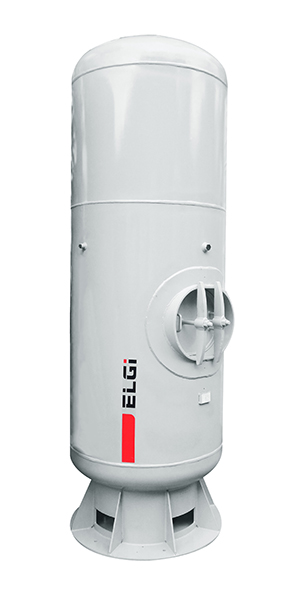Air receiver setup design

Compressed Air can design the air receiver setup, supply the air receiver and install and maintain it
We can also advise you on safety precautions to take when working with them.
Design
When we are planning the installation of an air receiver we will take into account the layout of your plant from a health and safety and production perspective. Poor location of an air receiver can affect the ongoing health and safety of operators, maintenance personnel and people in the surrounding area, as well as the integrity of the pressure vessel.
The following matters will be considered:
• locating the compressor and air receiver to minimise the effects of heat and noise, and where:
– it cannot be struck by mobile plant
– it can be fully accessed for inspection and maintenance (eg work platforms)
– safety devices can be monitored
– other plant does not affect its operation (eg drawing in exhaust fumes from combustion engines)
• the direction that a blowdown/pressure relief valve discharges
• avoiding burns through contact with hot piping
• the location of shut-off valves and isolation points
• the location of dangerous goods (in relation to the air receiver to avoid the possibility of fire
Supply
Before buying an air receiver from us, consult your staff to ascertain:
• the intended use
• operational parameters
• frequency of use (eg 24 hours a day continuously or sporadically)
• physical constraints of the workplace
• required distances from other plant
• required distances from flammable liquids
• required distances from people
• impact caused by the weather.
You should also consider safety within the workplace after the air receiver is purchased, for example:
•what new risks will be introduced to the workplace?
•what engineering controls will need to be introduced (eg piping that is pressure rated)?
•what new safe systems of work will need to be developed?
•what specific information, instruction, training and supervision will be required for the new plant?
A formalised safe work method statement and a risk assessment should also be completed.
Compressed Air Controls can then supply you with the right air receiver for your requirements as some are not designed to supply respiratory air.
We supply ELGi Equipment Ltd AirMate Air Receivers and air compressors which emit low levels of noise. We would nevertheless position the air compressor and air receiver to minimise risks associated with noise.
Install
When we install the air receiver we would ensure that it can be locked out and tagged out when:
- not in use (to prevent unauthorised use)
- being worked on (to ensure the safety of maintenance staff or operators)
- deemed unfit for use (either following an incident, during an inspection or before commissioning).
We would also supply safety devices which we would inspect, maintain and repair during services.
They include:
- Pressure relief valves – designed to prevent pressure from building up beyond the design pressure of the air receiver.
- Blowdown valves – used to drain contaminants from the air receiver. There are automated systems available. These need to be tested to ensure that they are working regularly.
- Shut off valves – used to shut the air off from the air line or hose. They need to be easily accessible from locations along the line in case of rupture or other issues when immediate access is required.
- Isolation point – will be located so that the air compressor can be shut down safely in an emergency. The isolation point will not discharge the energy or compressed air from the system.
We would also ensure:
- That the air receiver was installed and anchored on proper foundations to prevent tipping over.
- The supports are protected against corrosion.
- The air receiver is level with the blowdown valve at the lowest point on the vessel.
- The blowdown valve is accessible for performing the regular blowdown and maintenance activities.
We would then commission it to specific performance parameters before it was used for the first time or before restarting after maintenance or repair,
We advise you on what is required to keep your records to the appropriate standard
Servicing
As part of the servicing, Compressed Air would inspect the air receiver to ensure it stays in a safe condition. This would include an external inspection; checking fittings, safety devices, protective coatings, anchoring, supports and identification markings. These inspections are used to detect anomalies or defects, such as corrosion, leaks, bulging, signs of excessive temperatures or signs of cracking. We will also inspect it internally and the pressure relief valve will be tested at the same time.
We can provide preventative maintenance, AirCare✓, in line with manufacturer recommendations.
Repair
If your air receiver does get damaged, we will advise whether it is more cost-effective to repair or replace it. If the defect makes it unsafe then we will decommission it and lock it out before replacing it. We will also explain what the damage is and how to decrease your chances of that reoccurring.
Compressed Air Controls would conduct a recommissioning inspection following repairs, changes to use, relocation and when returning to service after a period of non-use.
Have you had an air compressor setup designed and installed by us? Leave us a review.
